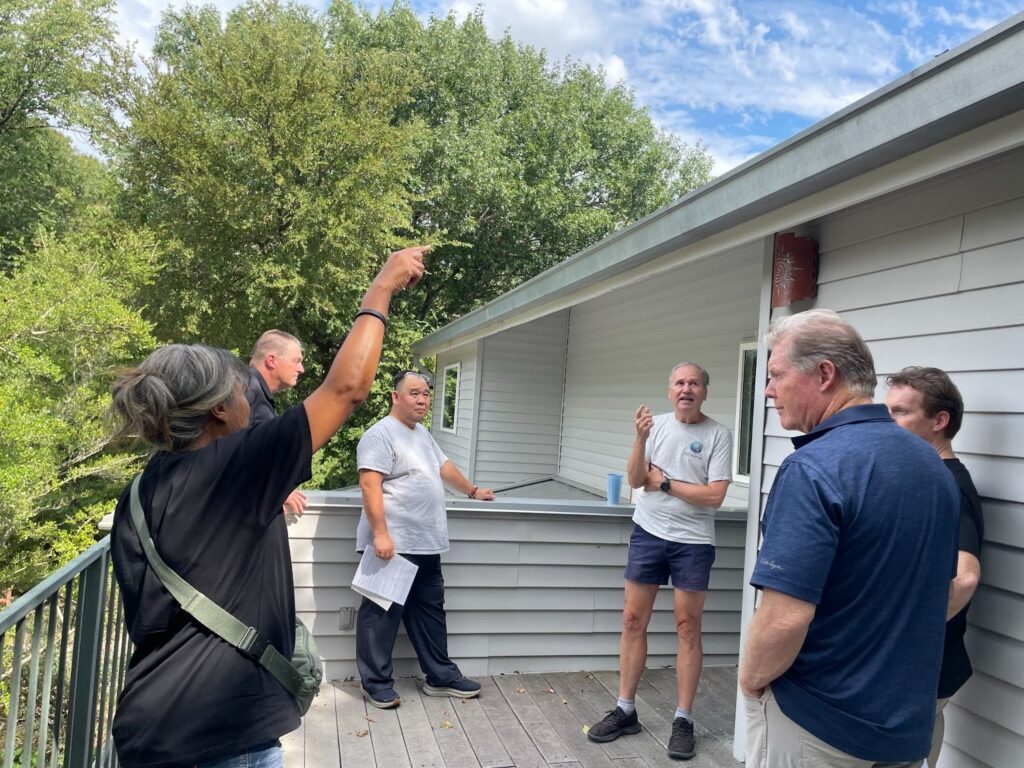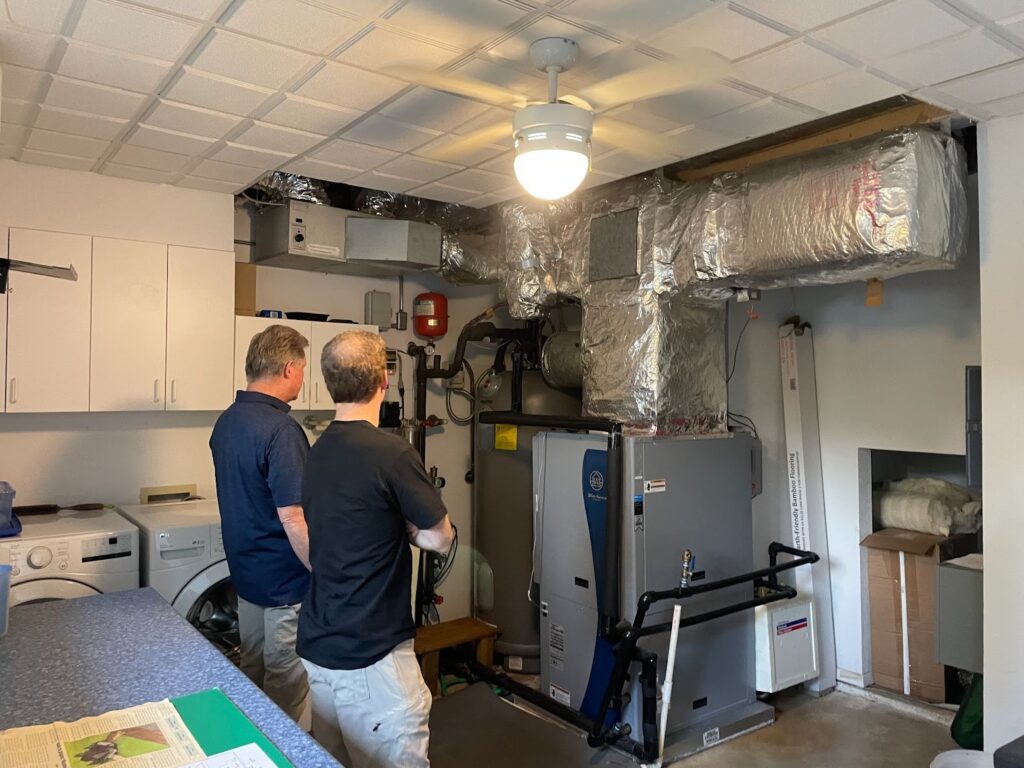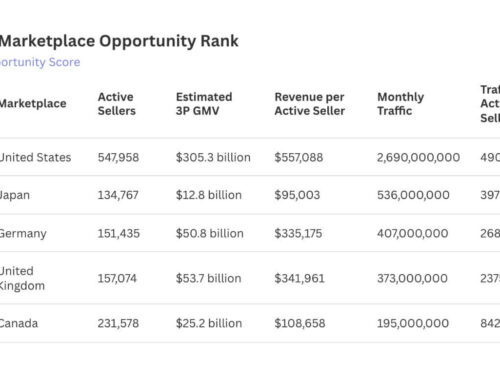This Texas Family Designed Their House Around the Solar Cycle Nearly 30 Years Ago
October 23, 2025
Some 30 years ago, Paul and Elena Westbrook considered the earth’s rotations around the sun to make a big life choice: where to build a home.
Tracking where the solar noon would land on their property throughout the year proved clever. The sun warms their home, dwindles their energy bills to nothing and offers them a sense, each day, of their belonging among nature.
The Westbrooks’ two-story home in Fairview, Texas, has become a pilgrimage of sorts for those contemplating solar design and power in this oil-rich state that also leads the nation in renewable energy.
More than 2,500 people have shown up at the Westbrook home over the years for tours and advice. Living in accordance with the sun is incredibly logical, Elena said, and allows for a deep connection with the land.
Get Inside Clean Energy
Today’s Climate
Tuesdays
A once-a-week digest of the most pressing climate-related news, written by Kiley Price and released every Tuesday.
Get Today’s Climate
Breaking News
Don’t miss a beat. Get a daily email of our original, groundbreaking stories written by our national network of award-winning reporters.
Get Breaking News
ICN Sunday Morning
Go behind the scenes with executive editor Vernon Loeb and ICN reporters as they discuss one of the week’s top stories.
Get ICN Sunday Morning
Justice & Health
A digest of stories on the inequalities that worsen the impacts of climate change on vulnerable communities.
Get Justice & Health
“Our attitude toward the plants out here, and the life, has been one of respectful interdependence,” Elena said on the eve of the autumnal equinox.
In 1993, the Westbrooks, married for three years then, bought the land to construct what they call a radically efficient home. Both were around 30 years old and working technical jobs. Elena conducted site assessments for an environmental consulting firm. Paul was a project engineer at Texas Instruments, the global semiconductor company headquartered in Dallas.
Their land search involved a lengthy list of requirements. “Paul was Mr. Efficiency from the beginning,” Elena said. Paul is enthusiastic and frugal by nature. He drives a 2007 Prius, which gets more than 50 miles to the gallon. “Why would I junk a perfectly functional car to get the latest and greatest,” he said.
The Westbrooks decided the house would have to face north or south, and be surrounded by evergreen trees at least on the north and west walls. They wanted a home that, on winter solstice, would be flushed with sun on its south wall.
And soil was important. Elena had a soil map for Collin County, where they were looking to build, at her office. They wanted to avoid clay, which permeated much of the area. They pinpointed a lot with eddy gravelly loam, a chalky limestone soil, that would keep the foundation of the house secure, unlike the surrounding clay.
Their screening process took three years. The day the couple signed the paperwork for a 2.2 acre lot, Elena found out she was pregnant with their daughter.

The 2,713 square-foot house was completed in September 1996 and continues to evolve and prove its value. The design used passive solar orientation and structural methods and equipment to reduce the environmental impact and energy demands of the house. The home was built with insulated panels and a reflective metal roof. There is also a geothermal heat pump, an energy recovery ventilator and a solar water heater.
The Westbrooks estimate they spent about $13,000 more on efficiency measures than if they were to build a conventional home. As Texas’ utility rates have increased, so have their monthly savings. Paul calculates that the home’s efficiency has saved them $44,000 over the last 29 years and uses 75 percent less energy than other homes its size.
Shade and Sun
Forested red oaks and red bud trees shade their home from the strong Texas sun and offer them colorful scenery throughout the year as the leaves turn. Instead of paintings on the wall, they opted for large windows showcasing the foliage.
“Nature becomes the canvas,” Paul said. “The design is to draw your eye toward nature, not toward some human choice inside.”
They trim the native trees when needed but allow for leaf litter and fallen branches to draw coyotes, armadillos and road runners to their wooded property.
The Westbrooks were precise. They placed the walls, windows and roof overhangs to eliminate direct sunlight in the summer while still capturing a considerable amount of heat from the sun in the winter.
They used structural insulated panels to create the air-tight walls and roof of the house, instead of traditional “stick” framing, pieces of wood held together by studs. Each panel, manufactured in 24 x 80 foot slabs, has a foam core with wood panels glued to each side, looking a bit like an oversized ice cream sandwich. Paul sent the specifications of the house to the now-defunct Arlington manufacturer Korwall Industries, which pre-cut the windows, door openings, light switches and outlets in the panels.

The Westbrooks chose a galvalume steel roof. It cost twice as much as an asphalt one but is rated as class 4 hail resistant, the strongest on the market. As a result, the Westbrook’s homeowner’s insurance was discounted by 25 percent. Over the years, the insurance savings have paid for the roof, which will likely outlive him, Paul said.
The couple calculated that the house cost $85 per square foot. Their efficiency tailoring added $90 a month to their mortgage payment in the 1990s but it also cut their utility bill. In their first month in the home, their energy costs were $140 less than homes of a similar size, according to Paul.
Instead of a standard heat pump that relies on outside air as a heat sink or source, the Westbrooks engineered a ground source heat pump. It relies on four 220-foot underground shafts that circulate fluid, in a closed loop, heated or cooled by the temperature of the earth.
The shafts are made up of three-quarter-inch polybutylene tubes that were slid beneath the foundation of the house and snaked into a field on their property. The tubes were treated with bentonite clay, a natural, absorbent clay, commonly used to seal ponds. The geothermal pump has worked without a hitch and there’s still 26 years left in the system’s 55-year warranty, Paul said.
“We stay in great comfort here,” Paul said to a September tour group. “Since heating and cooling is the biggest expense in all of your energy bills, that leads to needing a very small solar system.”
This story is funded by readers like you.
Our nonprofit newsroom provides award-winning climate coverage free of charge and advertising. We rely on donations from readers like you to keep going. Please donate now to support our work.
In December 2012, the Westbrooks added a 3.3 kilowatt solar array to the roof and in 2014 installed two additional solar panels, giving them a total capacity of 3.7 kilowatts. They connected their solar system to the electric grid using a net-metering agreement with Grayson Collin Electric Cooperative and they pay just the monthly base connecting fee, which in recent years has jumped from $25 to $40, Paul said.
The Westbrook’s system is smaller than most rooftop solar systems because the home’s efficiency measures reduce their energy use. The Westbrooks also added a 10.1 kilowatt hour battery system some months after they, like millions of Texans, lost power in Winter Storm Uri in 2021. Despite the family’s solar panels producing energy for the grid once the sun came back out, they still had no electricity in their house. It pushed Paul to invest in a battery and high-speed transfer switch. It allowed the Westbrooks to set up a microgrid to switch to in milliseconds in case the power goes out.
Clean Energy Tours
The Westbrooks typically run tours once a year for the American Solar Energy Society’s National Solar Home Tour. This year, the couple also opened the doors to 45 people for Sun Day, a day meant to celebrate clean energy. Visitors asked about getting rooftop solar ahead of the federal tax credits expiring in December. In anticipation of these questions, Paul said, he had already phoned a few local install companies, who were largely booked through the end of the year.
The Westbrooks handed visitors a printed timeline of the impending deadlines entitled: “Tax credits and procrastination don’t mix (but even if you do miss them, these upgrades more than pay for themselves over time, saving you money and a more sustainable and healthier future)!”
Families like the Westbrooks have been part of a pioneering group in Texas, looking to offset their electricity consumption with solar energy. While Texas has become the nation’s leader in utility-scale solar in recent years, it’s fourth in rooftop solar. The percentage of Texas homes powered with rooftop solar is less than 4 percent, according to a September report from the Solar Energy Industries Association. The leader in home solar is California, where more than 20 percent of homes have installed rooftop solar panels.

When there are a few cloudy days in a row, the Westbrooks turn on their water heater. Otherwise, a majority of their hot water comes from a pair of flat plate collectors, a device on their roof that harvests heat from the sun, and a closed loop heat exchanger. A mix of synthetic liquid and water circulates in the loop to the collectors on the roof. The 85-gallon storage tank can reach up to 160 degrees at the end of the sunny day and can stay that hot for a few days.
Because of the insulation, the Westbrook’s home can go two months every spring and fall without turning on heating or cooling. The first full year the couple lived in the house in 1997, they didn’t turn either on for three months. When Memorial Day weekend came, they decided to turn on their air conditioning and found the heat pump frozen from lack of use. It was replaced under warranty but a technician advised them to run the system for 15 minutes a few times a month to keep the seals lubricated.
“We were so efficient that we killed our pump before it was a year old,” Paul said to a tour group of a half dozen people.
Cascading Effect
Over the years, some of Paul’s former colleagues at Texas Instruments have toured the house, including a firm’s vice president, he said. She asked if these kinds of savings could be applied at a semiconductor facility the company planned to build. And if so, how much? After a few months of work, Paul had an answer.
“I’m pretty sure we get 30 percent savings with no capital cost addition, just using the integrative design,” he told the vice president.
“I suspected as much,” he remembers she said.
The vice president then encouraged a senior vice president of manufacturing to tour the Westbrook home. After an hour and a half tour, Paul remembers, the senior vice president asked what needed to happen to make this a possibility at Texas Instruments.
Money, support from management and a charette, a meeting akin to a high-powered hack-a-thon but focused on engineering and design, Paul told him. That meeting happened in 2003 at the company’s headquarters in Dallas with more than 30 employees and a dozen experts. “It was the three most fun days of my entire 33 years of TI,” Paul said. “The energy, the excitement in that room—the sense of possibilities.”
One month later, the company announced it was building a new, more efficient manufacturing facility in Richardson. When it opened in 2009, it was the first LEED Gold semiconductor factory in the world and Paul said it operated 42 percent more efficiently than any factory the company had built before.
“This house has saved way more energy than just this house has saved,” Paul said. “That kind of cascading effect—it’s pretty exciting.”
About This Story
Perhaps you noticed: This story, like all the news we publish, is free to read. That’s because Inside Climate News is a 501c3 nonprofit organization. We do not charge a subscription fee, lock our news behind a paywall, or clutter our website with ads. We make our news on climate and the environment freely available to you and anyone who wants it.
That’s not all. We also share our news for free with scores of other media organizations around the country. Many of them can’t afford to do environmental journalism of their own. We’ve built bureaus from coast to coast to report local stories, collaborate with local newsrooms and co-publish articles so that this vital work is shared as widely as possible.
Two of us launched ICN in 2007. Six years later we earned a Pulitzer Prize for National Reporting, and now we run the oldest and largest dedicated climate newsroom in the nation. We tell the story in all its complexity. We hold polluters accountable. We expose environmental injustice. We debunk misinformation. We scrutinize solutions and inspire action.
Donations from readers like you fund every aspect of what we do. If you don’t already, will you support our ongoing work, our reporting on the biggest crisis facing our planet, and help us reach even more readers in more places?
Please take a moment to make a tax-deductible donation. Every one of them makes a difference.
Thank you,
Search
RECENT PRESS RELEASES
Related Post



